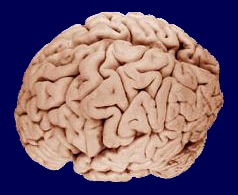Scientists have discovered that the brain has a built in carbon-dioxide monitor to signal suffocation. The finding could hold the key to aiding sufferers of panic and anxiety disorders, which can be triggered by carbon dioxide accumulation.
 Writing in Cell, University of Iowa researcher Adam Ziemann and his colleagues found that a brain protein called ASIC1a (acid-sensing ion channel 1a) is expressed at high levels in a brain region called the amygdala, which is responsible for generating fear, anxiety and anger emotions.
Writing in Cell, University of Iowa researcher Adam Ziemann and his colleagues found that a brain protein called ASIC1a (acid-sensing ion channel 1a) is expressed at high levels in a brain region called the amygdala, which is responsible for generating fear, anxiety and anger emotions.
As long ago as 1918 scientists knew that carbon dioxide could trigger anxiety attacks in panicky-patients, but why was a mystery. In this new study the team exposed mice to elevated CO2 levels and showed that it increased brain acidity - because CO2 produces carbonic acid - and activated the protein, evoking fear behaviour in the mice and reinforcing the formation of fear-related memories. But when the channel was inactivated, or when brain acidity was reduced, the effect went away.
The brain most likely uses this system as a suffocation-sensor, and by triggering fear sensations encourages an affected animal to flee from the cause. But people with anxiety disorder might be over-sensitive to the effect, which explains why they begin to hyperventilate. Consequently the researchers are now investigating whether changes to ASIC1a contribute to disorders of this sort, and whether targeting the gene pharmacologically can help to alleviate the symptoms.










Comments
Add a comment